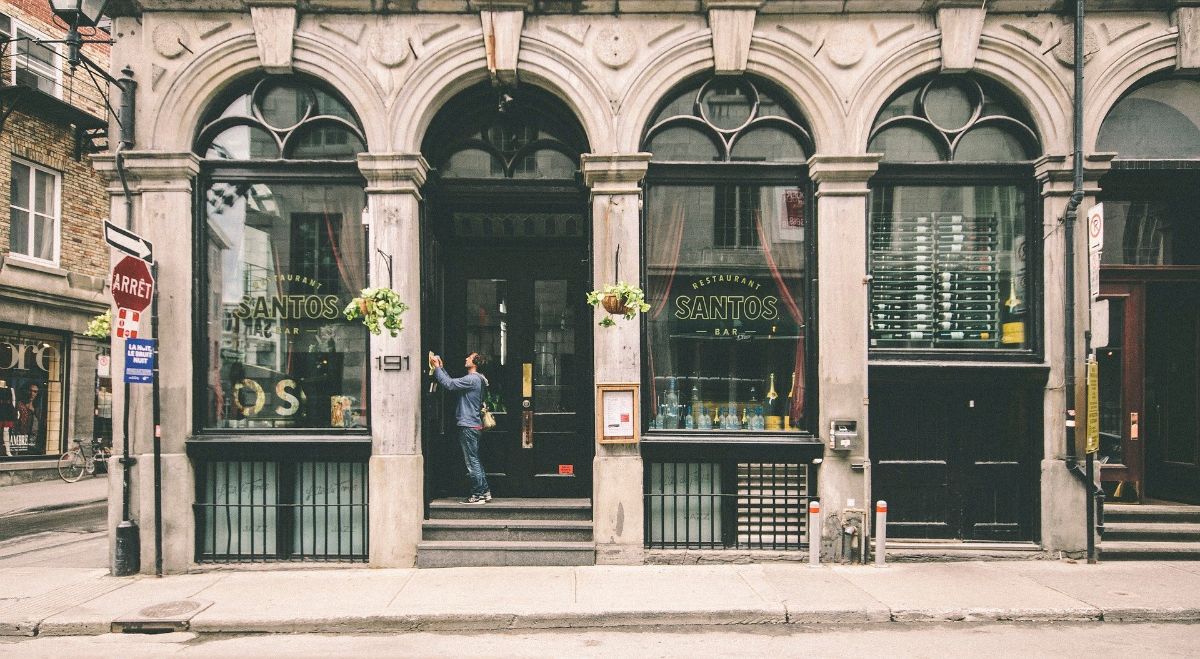
It is possible that, on occasion, you have found that a relative, friend or acquaintance has a "peculiar" house. And it is characterized because instead of living in an apartment, a semi-detached house, a chalet, etc. he does it in a local. But, Can a place be transformed into a home?
Legally, the answer would be yes. But to do so it is necessary to take into account some issues. However, it is very simple and if you have a place and need an extra home, this may be the solution for many families. Do you want us to explain you more?
Yes, a place can be transformed into a home

There is no doubt that it is increasingly difficult to choose a home. High prices, lack of space in some cities ... have led to the emergence of new forms of housing, not only through prefabricated houses, but also the economic premises themselves.
These are much cheaper than a house, and a local can legally be converted into a home. Therefore, many choose this option to transform a local into the house of your dreams. Of course, everything will depend on the city where you live and the City Council you depend on.
And it is that you cannot directly change the premises for a house, it is necessary to process a series of changes so that this is "legal". In addition, you must bear in mind that not all premises are "capable of converting into housing", there are a number of requirements that must be met.
A place can be transformed into a home: requirements to do so

When transforming a premises into a home you must bear in mind that there are a series of requirements to be met. These are:
That the premises have an adequate useful surface.
And is that You cannot build a home in a local if it does not have, at least 38m2, 25m2 in the case that it is a studio. This space must be considered as a useful surface.
This implies that any premises that are less than the figures that we have mentioned cannot be authorized to transform into housing, and, no matter how much you need it, they will not give you permission to do so.
The premises must be on urban land
This is something that the vast majority of locals will comply with, since these they are usually built in cities and towns. The idea is that these places are within the "urban" zone and not the rustic zone, since if this is the case, they will not be able to have this possibility.
Other requirements
In addition to these two great requirements that we have discussed, there are some others that must be met but that will depend on the Autonomous Community where you are, or the municipality, since they are more specific regulations.
Almost all of them will refer to ground level (not being able to build anything that is below the level of the sidewalk (for example a basement)), having lighting in the rooms and having all the minimum facilities (lighting , drains, plumbing, electricity ...) to make it habitable.
A very important point, and that can invalidate the entire proposal to transform a premises into housing, is that the statutes of the community of the property do not prohibit it; or that the neighborhood or district does it, because the number of homes per hectare is already exceeded.
How to transform a premises into a home step by step

Whether you have bought a place for this function or you have one and now you need to convert it into a house, the steps you must take to do it well, and not be told later that you cannot use it as such, are the following:
Make an appointment with an architect
It is necessary for a professional to visit the premises and see if, according to the regulations, it could meet the requirements to convert a premises into a home. In case work needs to be done, he can give you an estimate to see how much it will cost.
And it is that it will prepare a feasibility study of the project, where the work to be undertaken, the time and the cost of that work are established. In addition to recommending, or not, the transformation.
Present the project to the City Council
The next step you must take is to take that study (as long as it is positive) to the City Council so that they can study it and approve or deny it. If they approve it, you can continue with the next step but, if they deny it, in addition to giving you the reasons for it, you may be able to change the project to adapt it for the yes (or you may not obtain the permissions and must leave it).
Change the land registry of the premises
If the City Council approves and you can transform a premises into housing, you must make a cadastral declaration to be able to change the cadastre of that premises. And it is that it will become a home.
Pay the building license fees
The last step would be to start the works to convert the premises into a home. And, in this case, you must request a building license to do so. Once finished, it is very likely that you will also have to pay the habitability certificate, that is, the document that confirms that the house meets the conditions to be inhabited by people.
This document can be given by the same architect who has carried out the project in the beginning and can be granted before the works or after them.
How much does it cost to convert a premises into a home
We are not going to fool you, it is not cheap. But if we combine the price of the premises and the work you carry out, along with the procedures that you must complete and pay for, it is possible that it will continue to be more profitable than buying a flat.
How much can we talk about? Without putting the work in, we could be around 3000 euros, only the certificate of habitability and the project of change of use. To that you must add the building license and the reforms, which can be between 20000 and 40000 euros (or more).
The final figure will depend on the city where you live, the cost of the architect, and the type of reform you carry out (as well as the materials you are going to use, whether they are of higher or lower quality, technological, expensive ...).